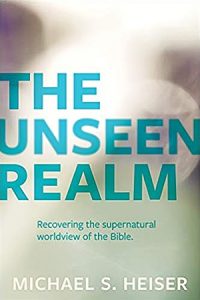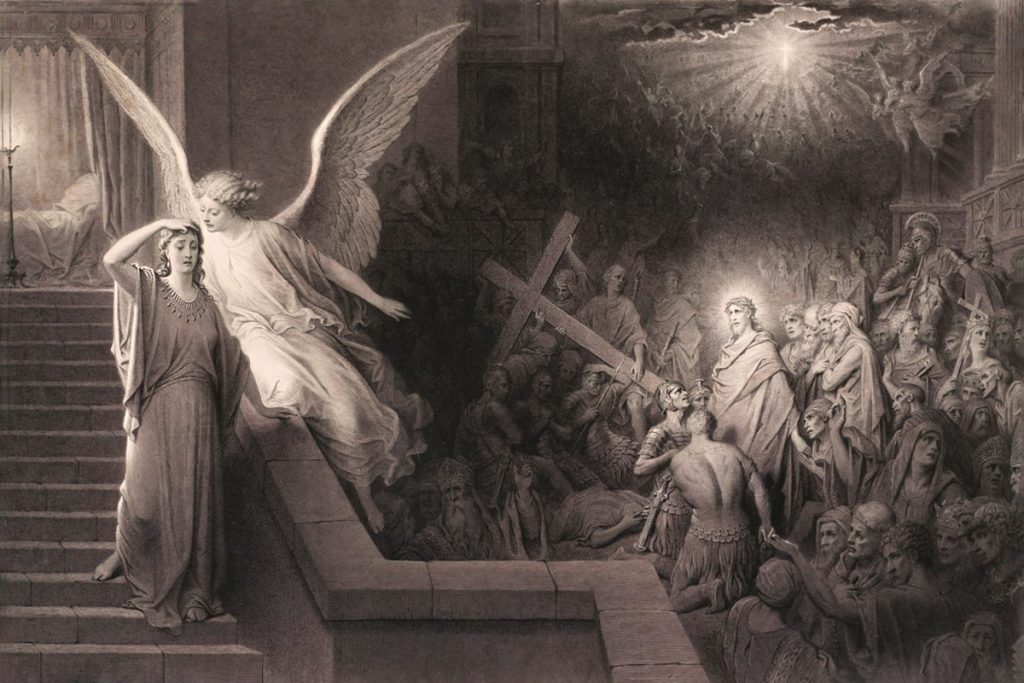Today I completed this book word-for-word, all 387-pages. It took a few months to get through it as I’m normally reading several books at a time due to coursework, but I read through it carefully and some chapters more than once. Every once in a while, a book comes along that completely calls into question your perspective on the way things are. Or about facts concerning what happened in a historical sense. Some books further deepen your theological understanding of Scripture and the meaning of essential principles among modern writers and our forebears in antiquity.
That is not this book.
This book entirely upends a reader’s biblical worldview. It is not only in terms of the text and its historical, theological, or cultural meaning but also in terms of the underlying spiritual reality and the way things are. It concerns why the world is the way it is, how the human condition came to be, what was done about it, and what follows. This book doesn’t merely align or crowbar your thinking in a certain way. The book simultaneously exposes sunlight to your way of thinking and then drives a wooden stake into your mind to get your attention. It raises awareness concerning present spiritual realities to alert you about what shapes the physical existence we live out.
The book goes quite far to reveal spiritual entities that exist in a realm of existence unlike our own, but in many ways that overlap with our plane of reality. There are angels, seraphim, cherubim, demons, disembodied dead, and elohim, with distinctions identified within Scripture to highlight their place, purpose, and function in numerous ways that get our attention. Their metaphysical properties extend beyond our notions of space and time to surface an awareness within us that we are not alone. You are watched, guided, directed, and influenced unawares as part of society within a tide of human inevitability either for good or evil. You have a say; you have decisions of consequence, and your eternal outcome concerning God’s plan of salvation or demise is certain.
The book is divided into eight sections. Each section successively builds upon the prior terms and rationale set with appropriate hermeneutical principles with significant ancient literary research that spans all chapters. Dr. Heiser rigorously applies intertextuality principles in the use of Scripture to demonstrate the biblical authors’ intended meaning. Moreover, the theological meaning stitched together reveals deeper truths that span across the canon over time as intended and inspired in its Authorship.
The sections of the book are titled:
- First Things
- The Households of God
- Divine Transgressions
- Yahweh and His Portion
- Conquest and Failure
- Thus Says the Lord
- The Kingdom Already
- The Kingdom Not Yet
These areas of the book’s organization are a very high-level view of its content. Somewhat a play on words to evoke a reader’s imagination about how the subject matter brings out the biblical text’s meaning. The pseudepigrapha and other intertestamental writings are referenced to bring into perspective first-century biblical writers’ views. Largely about familiar Old Testament and Judaic beliefs about the spiritual realm.
The territory this book covers is significant in terms of its substance concerning the work of Christ and what He recognized about spiritual realities that were in effect throughout humanity. From His arrival to His death and resurrection, the presence of dark spiritual beings was within the world He occupied and traveled. Within the New Testament, we read about numerous encounters where Jesus reveals supernatural activity by what He does. Within the Old Testament, we read prophecies foretold and fulfilled both across the entire canon. How they were fulfilled deeply involves spiritual entities that call attention to how events and circumstances are orchestrated for intended outcomes less evident to casual observers of history or people in their daily lives.
The book continuously refers to people, places, and things that concern the Lord’s order within physical and spiritual Creation. Overall, there is a critical literary analysis of the sacred texts to demonstrate an ancient and modern worldview that involves a divine council before the Most-High to fulfill and achieve his purposes. Christ, the incarnate and embodiment of God, is thoroughly immersed and situated in this reality, both seen and unseen. To bring awareness further that the heavenly realm exists and applies continuous pressure to physical realities within the Universe. Namely, all elements of the Earth and its occupants.
The book covers events of the Edenic garden, the great flood, the Nephilim, the Rephaim, and their background, the dispersal of peoples at Babel, numerous messianic references in the Psalms, the prophetic references to the watchers and enormous spiritual forces, the redemptive work of Christ as a spiritual conquest, the revelation of Jesus’s divine identity, humanity’s spiritual nature, and destiny, and some eschatological discussion.
The book is well-known and now read by many. Dr. Heiser has substantial support for the content of this book. He has written others such as Reversing Hermon, Angels, Demons, and others, all surrounding his work as an academic scholar in the field of biblical studies. For more information about Spiritual beings, the BibleProject people have put together a playlist of videos that cover a few topics to a limited extent. It is just a taste of what this book The Unseen Realm covers. Playlist: Spiritual Beings.













